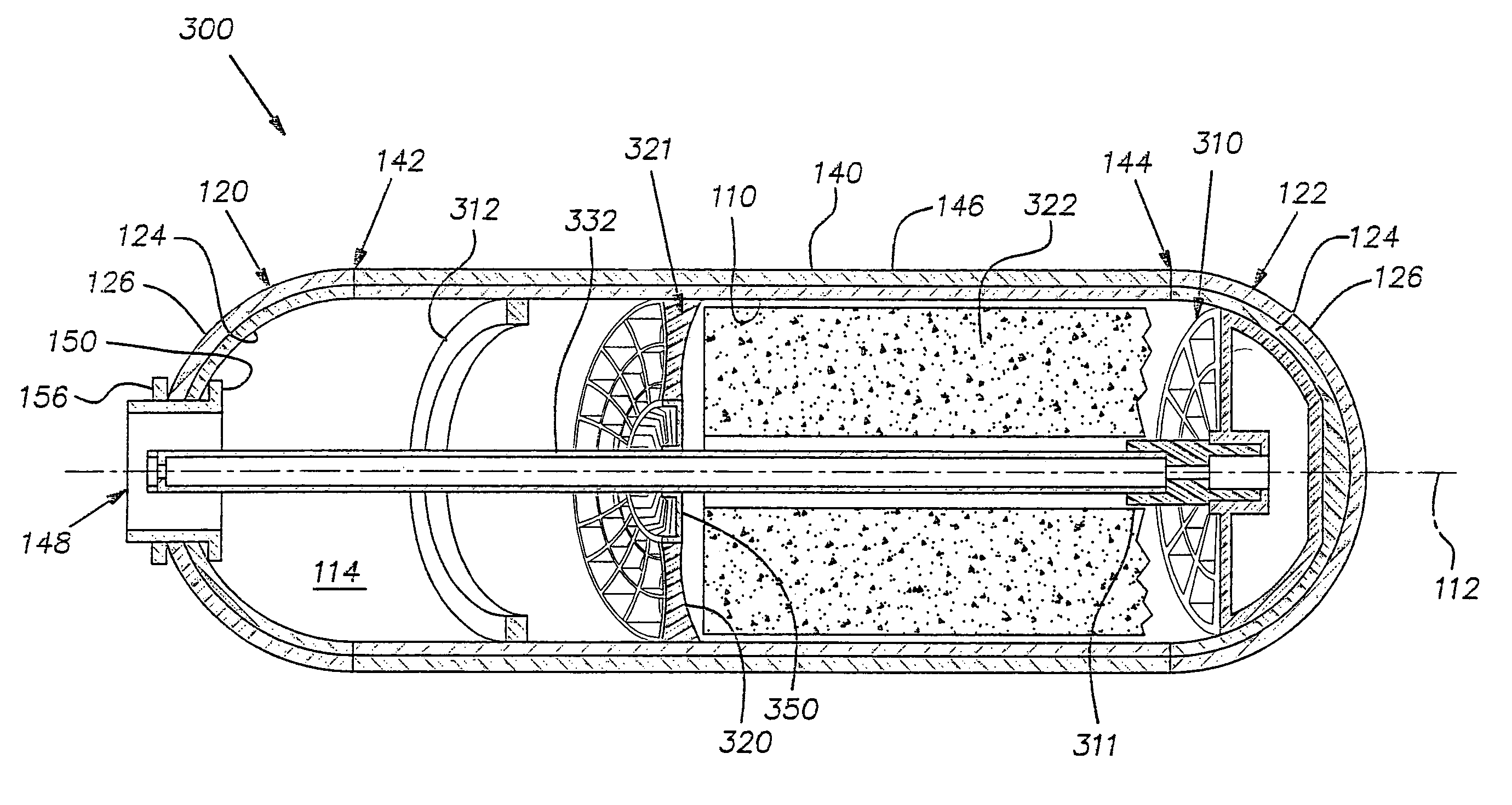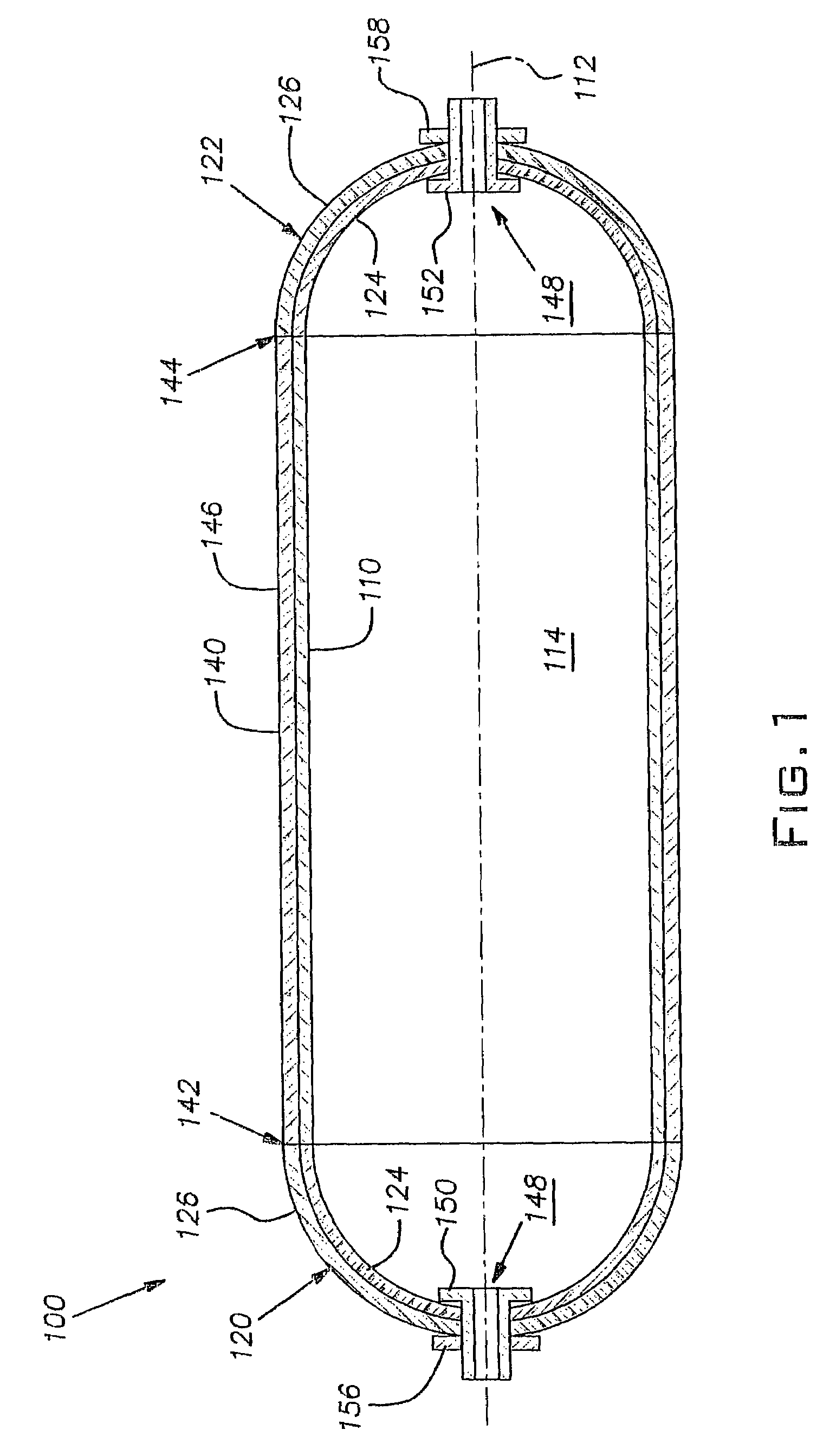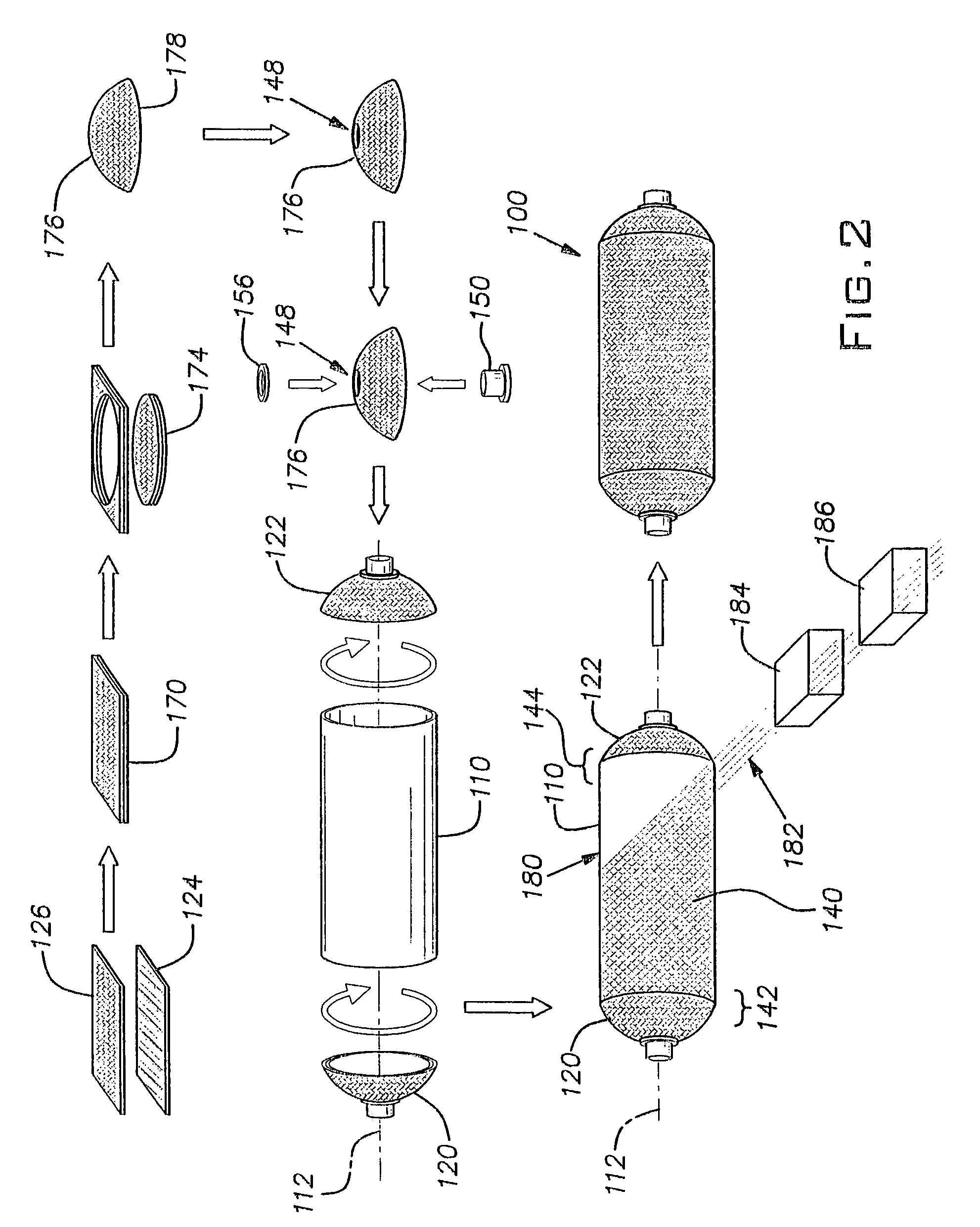Method of making a water treatment composite pressure vessel
a composite pressure vessel and water treatment technology, applied in the direction of vessel construction details, container discharge methods, mechanical equipment, etc., can solve the problems of heavy and subject to corrosion, and the problem of unable to manufacture suitable thermoset plastic tanks, and achieve the effect of reducing the cost of production and maintenan
- Summary
- Abstract
- Description
- Claims
- Application Information
AI Technical Summary
Benefits of technology
Problems solved by technology
Method used
Image
Examples
first embodiment
[0020]A composite pressure vessel 100 according to the present invention is shown in FIG. 1. The vessel 100 is a composite shell for use in, for example, a residential water system, a water storage tank, and a water treatment system.
[0021]The vessel 100 includes a non-fiber reinforced thermoplastic, polypropylene liner 110 that defines an axis 112. The liner 110 may be extruded, injection molded, or formed by other means.
[0022]The vessel 100 also includes first and second dome-shaped, semi-hemispherical endcaps 120, 122. The endcaps 120, 122 are generally identical and include a first, inner layer 124 and a second, outer layer 126. The first layer 124 is a thermoplastic polypropylene liner layer, while the second layer 126 is a reinforced thermoplastic, as will be described more fully hereinafter. In alternative embodiments, suitable endcaps are frusto-conical or flattened, and the endcaps need not be alike. Moreover, the endcaps may be of any desired shape or size.
[0023]The endcaps...
third embodiment
[0046]A vessel 300 comprising the invention is shown in FIG. 4. The vessel 300 includes many parts that are substantially the same as corresponding parts of the vessel 100; this is indicated by the use of the same reference numerals in FIGS. 1 and 4. The vessel 300 differs in that it includes a plurality of internal structures disposed within the cavity 114. The plurality of internal structures in the illustrated embodiment defines a water treatment assembly including a fluid diffuser 310, a reinforcing rib 312, a perforated separator 320, and filter media 322. The filter media 322 is, for example, activated carbon and is shown cut-away for clarity. Additional and optional filter media located opposite the separator 320 from the filter media 322 is not shown for clarity.
[0047]The ring-shaped separator 320, which is preferably formed from a thermoplastic material, defines a central aperture and a peripheral flange 321. Depending upon the size of the perforations or slotted openings f...
PUM
| Property | Measurement | Unit |
|---|---|---|
| lengths | aaaaa | aaaaa |
| lengths | aaaaa | aaaaa |
| area | aaaaa | aaaaa |
Abstract
Description
Claims
Application Information
 Login to View More
Login to View More - R&D
- Intellectual Property
- Life Sciences
- Materials
- Tech Scout
- Unparalleled Data Quality
- Higher Quality Content
- 60% Fewer Hallucinations
Browse by: Latest US Patents, China's latest patents, Technical Efficacy Thesaurus, Application Domain, Technology Topic, Popular Technical Reports.
© 2025 PatSnap. All rights reserved.Legal|Privacy policy|Modern Slavery Act Transparency Statement|Sitemap|About US| Contact US: help@patsnap.com



